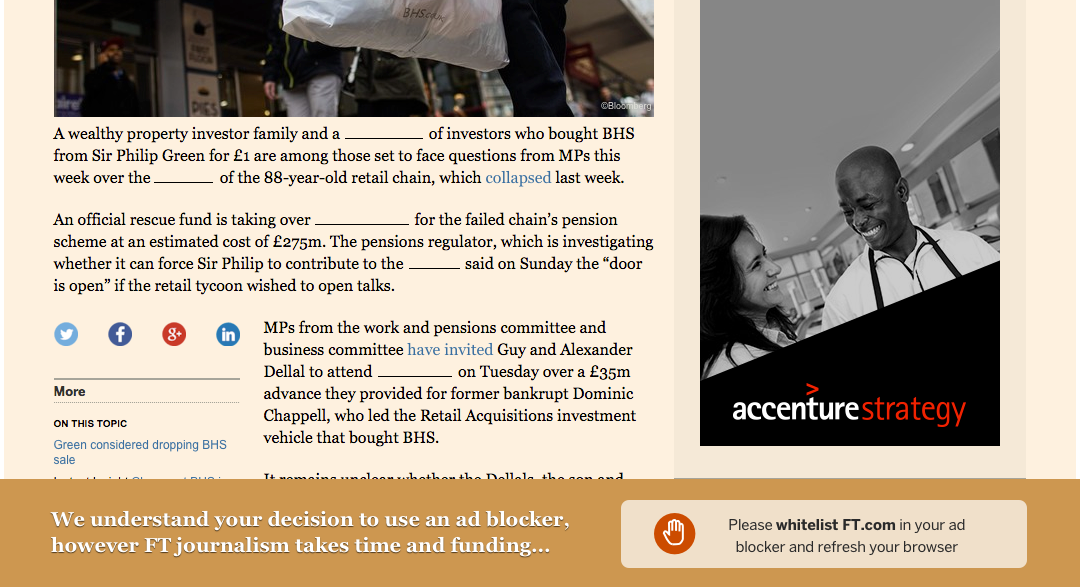Finally, some encouraging news in the fight for digital advertising dollars.
The Financial Times announced this morning that, after a 30-day experiment to combat the use of ad-blockers on its website, almost 40 percent of readers agreed to view advertising when asked to do so.
The results of the experiment are an indicator that readers are willing to permit advertising in the course of reading the news, Dominic Good, director of global advertising sales and strategy at the Financial Times said in a release.
“Through open dialogue with FT readers we are emphasizing the importance of advertising as a revenue stream for quality, independent journalism,” he said. “These results show that FT readers accept advertising as part of the reader/publisher value exchange, and they trust us to create the best possible advertising experience with our partners.”
The Financial Times used three different kinds of messages to persuade readers to “whitelist,” or allow advertising from, FT.com. One method included a straightforward ask — an unobtrusive banner at the bottom of the site emphasizing that journalism requires funding. That method resulted in nearly 40 percent of users opting to whitelist the site.

Image via Financial Times.
The second message was unconventional: It removed entire words from a story, replacing them with blanks, and asked readers to whitelist the site. That tactic persuaded 47 percent of readers to view advertising.
The last message restricted access to the website, a strategy that convinced two-thirds of readers to turn off their ad-blockers.
Since ad-blocking tools began cutting into digital advertising dollars, many publishers, including Forbes, Wired, The New York Times and Slate have launched campaigns asking readers to whitelist their sites. These messages are often polite rather than demanding, as publishers don’t want to turn readers off and damage their total audience numbers.
Although ad-blocking is still an industry-wide threat to online publishers (a recent report estimated that about a fifth of smartphone users use ad-blockers), there have been success stories in the fight to convince readers to view ads. 15Min.lt, Lithuania’s second-biggest news organization, recently published videos asking readers to whitelist the site and saw its ad-blocked impressions decrease by nearly 75 percent.






